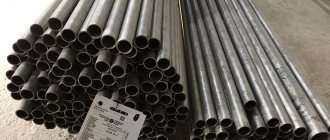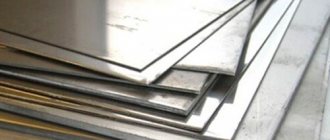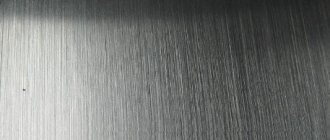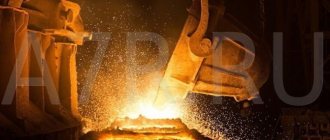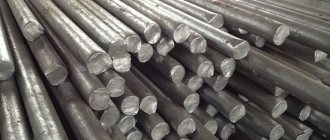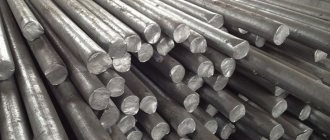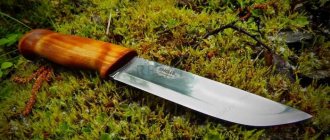Stainless steel AISI 316 in StenlisPro
StenlisPro supplies AISI 316 stainless steel sheets to the rolled metal market. The main characteristics of the products are as follows:
- Thickness: 0.5, 0.8, 4.0, 5.0 mm.
- Surfaces: matte or hot rolled.
- Size: 1000x2000 mm.
The sheets are characterized by plasticity and elasticity. The material does not require heat treatment after welding; it only needs to be cleaned of scale by chemical or mechanical means and passivated.
Selling AISI 316 stainless steel sheets, StenlisPro also provides services for cutting the material to size.
To clarify prices, standard sizes, types of additional services and other questions you may have, call: 8 (800) 333-06-56 or order a free call on the website. Our managers will contact you as soon as possible and help you place an order.
Properties and characteristics of AISI 316 steel
The main characteristics of AISI 316 steel are austenitic, low-carbon, with high resistance to corrosion in acids and chlorides, low sensitivity to cracking corrosion, high resistance to intergranular corrosion. The metal is malleable and can be easily processed, including drawing, rotary drawing, and contour shaping. It welds well, the seam does not require heat treatment. Retains its qualities over a wide range of temperatures.
Chemical composition of AISI 316 steel
Mechanical properties of AISI 316 steel
Corrosion resistance of AISI 316 steel
Stainless steel AISI 316L analogue 03Х16Н15М3
For the manufacture of welded structures, the AISI 316 - 316L steel variety is most often used. It has a lower carbon content.
StenlisPro sells matte sheets of standard size 0.8x1000x2000. Thanks to the presence of:
- molybdenum – 2%;
- chromium – 17%;
- nickel – 10%;
the corrosion resistance of the alloy increases. Due to this, it is used in the manufacture of ventilation systems and chimneys in industries with the presence of aggressive environments.
AISI 316, AISI 316T, AISI 316L
AISI 316 steel
Steel grade 316 is an austenitic nickel-containing steel. The domestic analogue of this brand is 08x17n13m2. 316 steel is high strength, corrosion resistant, ductile and heat resistant. The advantages of steel include the addition of molybdenum and a higher content of chromium and nickel. 316 steel is considered an improved version of AISI 304 stainless steel. It does not have magnetic properties. AISI 316 steel is quite easy to process, form and weld.
Application of steel:
Mechanical engineering and construction
Chemical, food and other industries
For the manufacture of products exposed to high temperatures, mechanical stress and oxidizing environments.
Other
Steel AISI 316 L
AISI 316 L is a corrosion-resistant austenitic steel. Due to the low carbon content of this grade, it is better suited for the manufacture of welded structures. Domestic analogues of AISI 316L steel are grades 03x17n14m3 and 04x17n13m2. This grade of steel is used to produce various equipment for the food, chemical, mining, oil refining and paper and pulp industries.
AISI 316 Ti steel
AISI 316Ti is an austenitic stainless steel with a lower carbon content. This steel is obtained by adding titanium to the base grade AISI 316. Titanium increases resistance to aggressive environments. 316 Ti steel is used for the production of equipment in mechanical engineering, as well as for the production of equipment in other industries. Domestic analogues of grade 316 Ti are grades 03Х17Н14М3, 10Х17Н13М2Т and 10Х17Н13М3Т.
The steel is easy to weld. No heat treatment is required after welding. Welds must be chemically or mechanically descaled and then passivated
AISI 316/316L easily finds many applications, being extremely elastic, durable and ductile. Common operations include bending, drawing, contouring, rotary drawing, etc. The forming process can use the same tools and machines that are used for carbon steel. This is due to the greater degree of hardening during forming of austenitic steel.
The annealing temperature range is 1050°C ± 25°C followed by air or water cooling. After annealing, etching and passivation are required.
Tempering occurs at temperatures from 200 to 400°C, followed by cooling in air.
Chemical composition (% by weight)
| Brand | WITH | Ni | Mo | Si | Mn | Cr | P | S |
| AISI 316 | ≤ 0.08 | 10-14 | 2.00-3.00 | ≤ 0.75 | ≤ 2.0 | 16-18 | ≤ 0.045 | ≤ 0.03 |
| AISI 316L | ≤0.03 | 10-14 | 2.00-3.00 | ≤ 0.75 | ≤ 2.0 | 16-18 | ≤ 0.045 | ≤ 0.03 |
| AISI 316Ti | ≤0.080 | 10-14 | 2.00-2.50 | ≤0.75 | ≤2.0 | 16-18 | ≤ 0.045 | ≤ 0.03 |
Mechanical Properties (room temperature)
| Rp m Ultimate strength (tensile), N/mm2 | elongation (% in L = 5.65 S0) | Organoleptic Eriksen test, mm | Fatigue strength, N/mm2 | Brinell hardness - HB | Rp0.2 Elasticity limit (yield), (0.2%), N/mm2 | ||
| AISI 316 | Type | 580 | 55 | 8-10 | 260 | 165 | 310 |
| Min | 515 | 40 | — | — | — | 205 | |
| AISI 316L | Type | 570 | 60 | 10-11 | 260 | 165 | 300 |
| Min | 485 | 40 | — | — | — | 170 | |
| AISI 316 Ti | Type | 600 | 50 | — | 260 | 165 | 320 |
| Min | 515 | 40 | — | — | — | 205 |
Physical properties (AISI 316L)
| Physical properties | Density | Melting temperature | Specific heat | Thermal expansion | Average coefficient of thermal expansion | Electrical resistivity | Magnetic permeability | Elastic modulus |
| Unit | — | °C | J/kg.K | W/mK | 10-6.K-1 | Ωmm2/m | at 0.80 kA/m | MPa x 103 |
| Temperature (°C) | 4 | 20 | 20 | 20-100 20-300 20-500 | 20 | 20 | 20 | |
| Meaning | 8,0 | 1440 | 500 | 15 | 16,0 17,0 18,0 | 0,75 | 1,005 | 200 |
AISI 316 product range
Standard sizes of AISI 409 stainless steel sheet
| steel grade | Domestic substitute | Material type | Surface | Thickness, mm | Width, mm |
| Aisi 316, Aisi 316L, AISI 316T | 08x17n13m2t 03x17n13m2t 10x17n13m2t | cold rolled | 2B | 0,4-3,0 | 1000x2000 1250x2500 1500x3000 |
| hot rolled | 1D | 2-100 | 1000x2000 1250x2500 1500x3000 1500x6000 |
Standard sizes of AISI 316 stainless steel pipes
| Hot deformed | Cold-worked |
| The products meet the requirements of GOST 9940-81 Hot-deformed seamless pipes made of corrosion-resistant material. Outer diameter: 6mm -406.4mm Wall thickness: 1mm - 4mm | The products meet the requirements of GOST 9941-81 Cold- and heat-deformed seamless pipes made of corrosion-resistant material. Outer diameter: 6 mm -406.4 mm Wall thickness: 1 mm - 4 mm |
Where can I buy?
Website creation: Media7.ru
Areas of application of AISI 316
AISI 316 stainless steel is actively used in such industries as:
- Food and pharmaceutical industries - due to increased requirements for hygiene and quality standards.
- Construction (facades, roofs, fences, welded structures, various architectural elements).
- Chemical industry.
- Mechanical engineering.
- Pulp and paper industry.
- Mining business.
- Shipbuilding.
- Oil and gas industry (stainless steel pipes, tanks, etc.).
Heat resistance and strength make it possible to produce tools, household appliances, equipment, and parts for mechanical engineering on an industrial scale. Another leading characteristic - oxidation resistance - contributes to the widespread use of AISI 316 steel for the production of containers for storing or transporting aggressive chemicals, pipeline elements through which not only water, but also corrosive liquids and gases are transported.
Rolled metal from AISI 316 steel
In the catalog, metal products made from AISI 316 stainless steel are presented in rolled, sheet, and pipe products. Products differ in size, production method (hot-rolled, cold-rolled), as well as the method of surface treatment - polished, matte, mirror surface. Find out more details from our consultants!
Stainless steel sheet Aisi 304
Stainless steel roll Aisi 304
Welded stainless steel pipes Aisi 304
An improved version of AISI 304 steel with the addition of 2.5% molybdenum, which makes it particularly resistant to corrosion. The technical properties of this steel at high temperatures are much better than those of similar steels that do not contain molybdenum.
Molybdenum makes steel more protected from pitting corrosion in chloride environments, sea water and acetic acid vapors.
Application area
AISI 316 steel is used in the production of equipment for the chemical industry, as well as for the production of products used in aggressive environments, such as, for example, cold sea water. It should be used with great caution for structures and equipment operating in the seawater environment of warm and equatorial seas.
Main characteristics
- good corrosion resistance in acids and chlorides
- low sensitivity to cracking corrosion
- excellent resistance to intergranular corrosion (even after welding - for AISI 316L)
- excellent weldability
- high compliance
- excellent machinability
Analogue according to GOST
- AISI 316 – 07Х18Н13М2
- AISI 316 L – 07Х18Н13М3
- AISI 314 Ti - 10Х17Н13М2Т
Chemical composition
| C | Mn | P | S | Si | Cr | Ni | Mo | Ti | |
| AISI 316 | ≤ 0.08 | ≤ 2.0 | ≤ 0.045 | ≤ 0.030 | ≤ 1.0 | 16.0 — 18.0 | 10.0 — 14.0 | 2.00 — 3.00 | — |
| AISI 316L | ≤ 0.03 | ≤ 0.5 | |||||||
| AISI 316Ti | ≤ 0.08 | 5x(C+N) — 0.7 |
Corrosion resistance
General Corrosion
Steel grades AISI 316, 316L are the most resistant of all stainless steels of the 300 series to atmospheric and other moderate types of corrosion. All environments in which it is recommended to use 300 series steels do not pose a danger to molybdenum-containing grades. One notable exception is nitric acid, which serves as a strong oxidizing agent for them.
AISI 316 is significantly more resistant to sulfuric acid than any other chrome-nickel grades. At temperatures around 50 °C AISI 316 is resistant to this acid in concentrations up to 5 percent. At temperatures up to 40°C and above 60°C this grade has excellent resistance to higher concentrations. In areas where sulfur dioxide condenses, it is much more durable than other types. However, safe concentrations should be carefully monitored.
The molybdenum content of AISI 316 steel provides resistance to oxidation in most environments. Laboratory testing shows that the alloy provides excellent boiling resistance to 20% phosphoric acid. It is also widely used in hot organics and fatty acids, so it is often used in the manufacture and processing of certain foods and pharmaceuticals. AISI 316 and AISI 316L can be used equally well in environments where there is a risk of intergranular corrosion. The use of low-carbon AISI 316L is preferable in parts that require welding.
Pitting corrosion
The resistance of 316 steels to pitting corrosion in the presence of chloride is increased by higher contents of chromium (Cr), molybdenum (Mo), and nitrogen (N). The relative measure of pitting resistance is determined by a parameter calculated as PREN = Cr+3.3Mo+16N. PREN for AISI 316 and AISI 316L steels (PREN=24.2) is higher than for AISI 304 (PREN=19.0), which reflects better pitting resistance due to the presence of molybdenum.
AISI 304 steel can resist pitting corrosion in water containing up to approximately 100 ppm chlorides, while for AISI 316 and AISI 317 this figure is up to 2000 and 5000 ppm chlorides, respectively. Although these alloys have been used in seawater (19,000 ppm chloride), they are not recommended for such use.
Intergranular corrosion
The carbon content in AISI 316 can cause thermal sensitization in welds and their heat-affected zones. For this reason, the use of low-carbon steel AISI 316L is preferable in parts that require welding. "Low Carbon" increases the time required for the deposition of "harmful" chromium carbides, but does not stop the precipitation reaction for a long time in a given temperature range.
Stress Cracking (Cracking Corrosion)
Austenitic alloys are susceptible to stress corrosion cracking (SCC) in halide compounds under stress. Although 316 alloys are somewhat more resistant to SCC due to their molybdenum content, they are still quite susceptible.
Causes of SCC:
- presence of halide ions (generally chlorides)
- residual tensile stress
- temperatures above 50 °C.
Stresses can arise due to the cold deformation of the alloy during forming, or rotary drawing, or during the welding process, due to the occurrence of stress from changing thermal cycles. Stress levels can be reduced by annealing or heat treatment after cold deformation. Low carbon material AISI 316L is the best choice when operating under stresses that contribute to the occurrence of intergranular corrosion.
Titanium alloy AISI 316 Ti and its application in shipbuilding
Any equipment operating on sea vessels must have the highest quality, reliability and, above all, corrosion resistance to the effects of sea water and the salts it contains. This fully applies to plate heat exchangers. The main advantages of plate heat exchangers when used in shipbuilding are their compactness, reliability, ease of maintenance and flexibility to change operating conditions.
Various types of collapsible plate heat exchangers produced by NPO TekhEnergoPribor fully satisfy all the requirements for ship equipment. Gasketed plate heat exchangers with stainless steel plates for cooling fresh water and with titanium plates for cooling sea water are widely used. The use of AISI 316 Ti steel plates (so-called titanium plates, made from a stainless steel alloy stabilized with titanium) for sea water is due to the resistance of titanium to corrosion, which is a consequence of the formation of an oxide film.
The AISI 316 Ti alloy has practically the highest corrosion resistance among the most common grades of stainless steel - in this indicator it is surpassed only by the AISI 904 L alloy. However, every coin has its own reverse side - the AISI 316 Ti alloy is characterized by the lowest parameters heat resistance - with a maximum of 600°C, versus 850°C for AISI 304 alloy, for example.
Domestic analogues of the AISI 316 Ti grade are steel grades 03Х17Н14М3, 10Х17Н13М2Т and 10Х17Н13М3Т.
Gasketed plate heat exchangers are used in the following ship systems:
- Central cooling of the main propulsion system and diesel generators
- Cooling of lubricating and hydraulic oils
- Heating sea water for technical purposes
- Air conditioning and ventilation of ship premises
- Heavy fuel heating
- Heating sea water for desalination plants
- Steam condensation.
Thus, the entire range of heat exchangers produced by NPO TekhEnergoPribor can work in one or another ship system.
Stainless steel grades 304 and 316 in pumping equipment
These grades of steel are popular among pump manufacturers. However, in some cases, AISI 316 stainless steel is the only right solution. For example, for pumps that are used on ships for the purpose of sanitary supply with sea water or cooling equipment with sea water. AISI 316 is characterized by increased resistance to the formation of all types of corrosion in sea water. Also, in the petrochemical, oil refining or mining industries, when transporting aggressive liquids, it is worth giving preference to pumps with a body made of alloy 316 due to its greater durability and endurance compared to 304. Pumping equipment for the food and pharmaceutical industries cannot do without parts made of AISI 316 alloy, since upon contact with the environment, a film is formed on the surface of the metal, which prevents the appearance of rust and other defects throughout its entire service life.
So what should you choose? There is no clear answer. 304 steel is much cheaper than 316 and its choice in many cases is justified.
In what specific environment do you plan to use the equipment? If it is salty or sour, choose AISI 316. This is perhaps the main and most accurate recommendation. As mentioned, molybdenum matters. What will be the operating temperature of liquids in contact with metal? High temperatures accelerate corrosion. This means that a higher class is suitable - 316.
Cost is an important factor when choosing the right grade of stainless steel. But sometimes, having saved on equipment, you will lose more on maintenance, repairs and downtime in the future. Therefore, it is best to consult with specialists to understand which brand suits your requirements.

